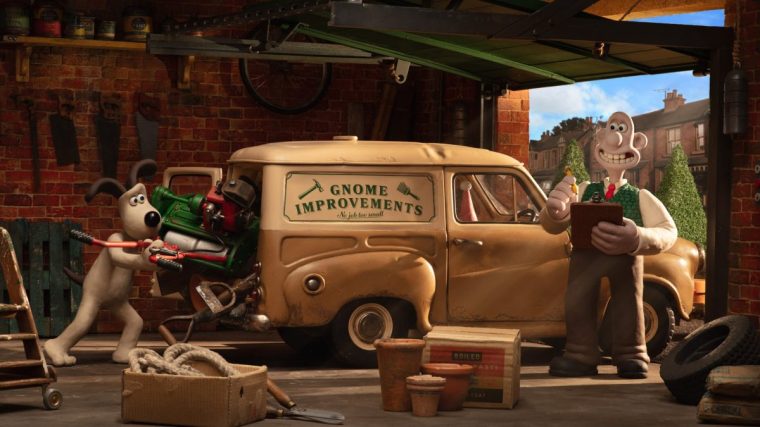All family films, even quaint stop-motion ones, require a good villain. And in Feathers McGraw, the Wallace and Gromit franchise has one for the ages. McGraw is a penguin with all the facial expressions of Jason Statham minus the eyebrows, but he’s fully terrifying here in Vengeance Most Fowl, the first full-length Wallace and Gromit feature in 19 years.
This career criminal is a master of disguise. Snap a red rubber glove on his head, and to the world he’s a chicken; drape him in a kitchen towel, and he could pass for a benevolent nun. His casting as arch-nemesis to the titular pair, in whose mouths butter wouldn’t melt, is perfect. Rarely have beady eyes been put to better use.
Ever since their first outing in 1989’s A Grand Day Out, Wallace and Gromit have proved unlikely cinematic titans, nominated for five Oscars – Best Animated Short and Best Animated Feature alike – and winning three. In truth, Nick Park and his production team at Aardman’s deceptively simple series about an eccentric inventor and his lugubrious beagle really shouldn’t work in the modern era – and certainly not when compared to the world of Disney and Pixar, where everything is bigger, brasher, and louder – but the twee, sweet and decidedly British films remain a delight.

The entire milieu of Vengeance Most Fowl can be deduced from its pun-tastic title, for here is a script that never knowingly avoids one. At one point, in a subplot that revolves around a particular root vegetable, Wallace (now voiced by Ben Whitehead, following Peter Sallis’s death in 2017) says: “That’s a turnip for the books.”
The film starts with the ageless inventor at home in his unprepossessing semi on West Wallaby Street, ignoring the mounting electricity bills in order to work uninterrupted on the mechanical creations that get him up in the morning, dressed and fed, and even pat the dog on his behalf. His latest innovation is a “smart gnome” he calls Norbot, a garden gnome programmed to do all the dull and boring jobs humans tend most to complain about. Norbot is not programmed to complain; for him “no job is too small”.
And so poor Gromit, who used to manage his ongoing existential fatigue by meditatively repotting plants in the outdoors, suddenly finds himself surplus to requirements. Soon, the gnome has taken over every chore: the gardening, the washing, hoovering the hallway. “Tech is the thing,” says Wallace, this 1950s Yorkshireman who somehow finds himself in the 21st century. Gromit’s reaction is a silent, loaded groan. His ears go limp.
When we first see Feathers McGraw, he’s in animal prison (a zoo) and still nursing a grudge towards the pair that dates all the way back to The Wrong Trousers. But when did incarceration ever hamper a movie baddie? From behind bars, he manages to access a computer in order to infiltrate the gnome’s mainframe – don’t ask, it’s complicated – thereby turning Norbot from “good” to “evil”. Suddenly, Norbot has multiplied, there are dozens of him, and each has gone over to the dark side. They help to break McGraw free, and from there it’s pandemonium, basically.
Wallace’s neighbours, previously in awe of Norbot, now turn on him as the army of robots riot and rampage. A not-so-subtle critique of big tech and the scientists that create it? Surely, yes. The chaos allows Peter Kay to have much fun as inept Chief Inspector Mackintosh, while the climactic canal boat chase rivals anything James Bond could offer, even at four miles per hour.
It is, all of it, glorious knockabout nonsense, a visual joy for kids, and exquisitely detailed for adults. When the Norbots’ antics make the local news, the TV reporter’s name is Anton Deck, and when Gromit retreats from the madness, we see him in bed reading A Room of One’s Own by Virginia Woolf.
Vengeance Most Fowl was a decade and more in the making, all of it painstaking. It was time well-spent. There is genius here.
‘Wallace and Gromit: Vengeance Most Fowl’ will be shown on BBC One and BBC iPlayer this Christmas


